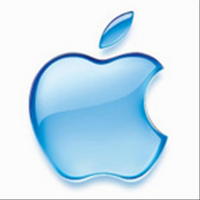Hints of Apple's new strategies in its Q3 financial call


As reported Wednesday by Jason O'Grady in his real-time coverage of the conference call, Apple announced revenues of $7.51 billion and net quarterly profit of $1.05 billion. The company had projected revenue of $6.8 billion.
Longtime Apple watchers are known for parsing such announcements word-by-word and reading between the lines, much as Soviet-era analysts would follow who stood where on the podium during the May Day parade in Moscow's Red Square.
Here are a few such gleanings I noted during the conference call: Signs of a new mobile platform. During the call, Peter Oppenheimer , Apple CFO, called the MacBook Air a "new portable category for Apple." This is an interesting statement that may point to a new direction for Apple ultralights.
Apple usually divides computer users into two camps: consumer and professional. Its product lines reflect that division: notebooks, MacBook and MacBook Pro; desktops, iMac and Mac Pro; mobile devices, iPod Touch and iPhone. But the MacBook Air is different.
Apple, it appears, sees the MBA as a new, distinct category, separate from the other notebooks. And the results of its first quarter of sales may bear that out.
When asked about the demographics of MBA buyers, Tim Cooke, chief operating office, said that the new model was appealing to road warriors, but also to college professors and student "It seems to have universal appeal."
According to the executive, there was little hit on the sales of the other MacBook lines following the introduction.
"Cannibalization factor was extremely low to the other portables, which is one of the key reasons we were able to have a very minor sequential decline from Q1 where usually it would be much deeper."
Check out this related post: Why does the MacBook Air make so many so dumb?
So, we may find other flavors of Air hardware. I mentioned back in the fall, that Apple should have built a One Child, One Laptop, or eePC machine. Perhaps this comment heralds a consumer/education market version from Apple.
Education market return. Apple said it had strong sales in the education market, with 35 percent year-over-year growth in individual and institutional sales. There is "significant momentum in this area," Cooke said.
As an aside, Cooke mentioned that Apple had surpassed Dell in education sales of portables last year. The two companies have been fighting for the segment over the past 20 years.
Building on the foundation of the Apple II, way back when, Apple once owned the education market. However, as schools installed networks and then the Internet, Apple fell out of favor with PC-centric IT directors. And parents wanted kids using the same machines that they used at work. Macs were balkanized in classrooms (I did some research on this in 2000 for a financial analyst company). There may have been more Macs in education, but they weren't growing. It was a gloomy picture.
However, over the past few years, this situation has turned around. The Macintosh is acceptable again for education buyers. This will continue into the next quarter with the year-end purchases in the K-12 market and then in late summer with the back-to-school sales.
Mac Pro strength. Cooke said that sales in both consumer and professional segments were strong and "across all geographies." Apple didn't release its detailed financial data, but he said that desktops sold well. The Mac Pro had its best quarter since the introduction of the Intel processor.
I noted that Japan seems to be turning around as well. Cooke said that sales in Japan were up 47 percent, year over year. With the economy there strengthening, that is another good sign for Apple.
iPhone. Apple said it had expected that demand would decline more than it did following the holiday shopping season, leading to "stock outs" in some Apple stores and in the channel. Cooke said that Apple had expected a "sharper seasonal decline," attributing this forecasting error to its inexperience in the phone market. He said it was Apple's first Q1 to Q2 as a phone company.
There's strong demand for this phone in Asia. According to Oppenheimer, the sales of phones with the intention of unlocking is "significant" and a "proxy for worldwide demand for the iPhone." The company will enter the Asian market later this year, he repeated.
Tick, tick, tick. The clock is ticking on that introduction. Apple expects to sell 10 million iPhones in calendar 2008. With 1.7 million sold so far, some may worry. But with more geographic markets opening up, and with games and vertical mobile apps for business coming in the summer, that goal looks attainable.